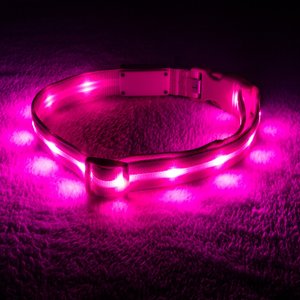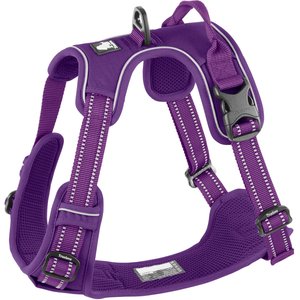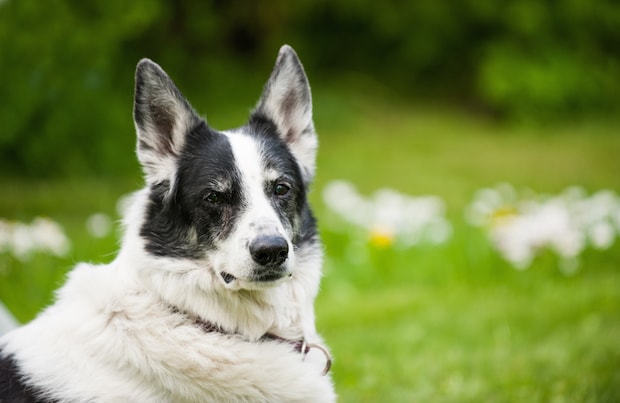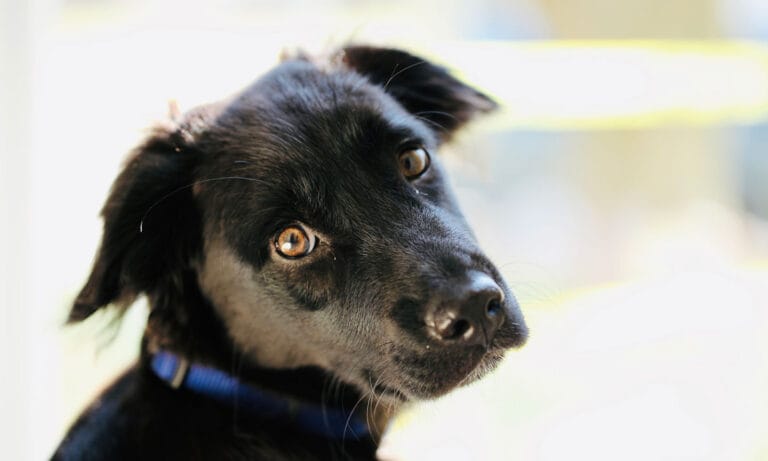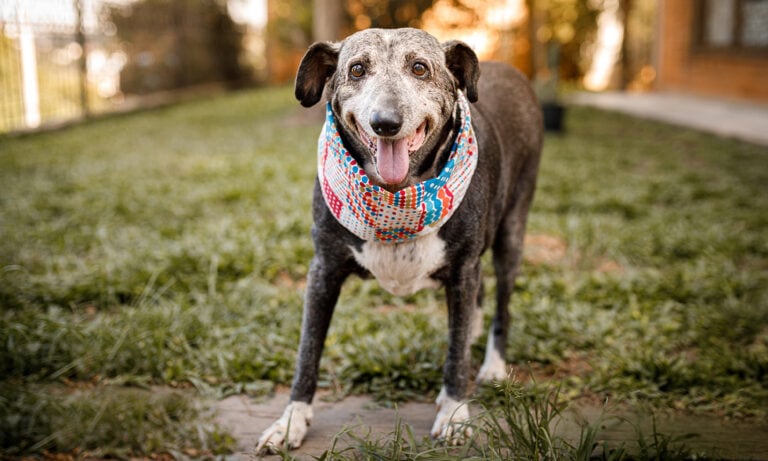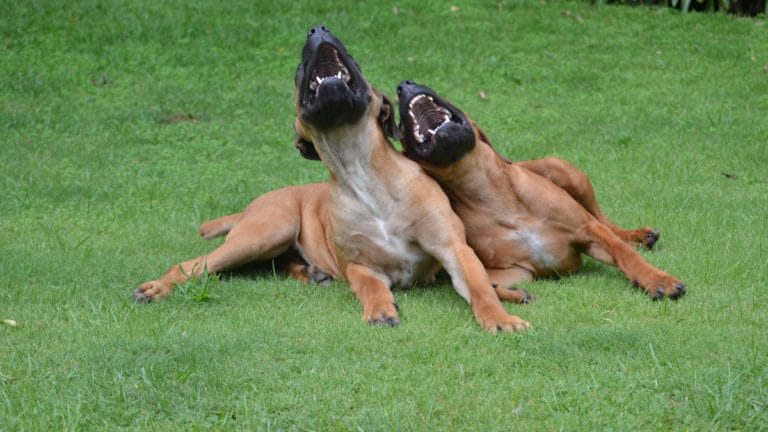With many pet parents arriving home from work late in the evening, a daily dog walk late at night is common practice. It’s also not unheard of to leave the lights off when you’re not at home. But both scenarios mean your dog is navigating their way through the dark—either in low light or even complete darkness. So, this begs the question: Can dogs see in the dark?
While you might find yourself squinting during a late-night walk, dog experts believe that dog vision fares just fine in the dark. We reached out to veterinary ophthalmologists for more information on just how well dogs can see in the dark.
In This Guide
Do Dogs Have Night Vision?
The answer is as clear as day—or, in terms of dog vision, as clear as night. Yes, dogs can definitely see at night, as the unique structure of their eyes makes it possible to see in settings with dim light or other low-light conditions.
“Dogs are actually better able to see in low light compared to their human owners,” explains Dr. Kristin Fischer, DAVCO, a veterinary ophthalmologist at Animal Eye Care Associates of the Lowcountry in Myrtle Beach, South Carolina. “The presence of increased rod photoreceptors in the retina and the reflective tapetum lucidum both enhance dogs’ ability to see at night.”
Increased Rod Photoreceptors
A dog’s eye contains more rods, or light-sensitive cells used for night vision, than it does cones, which detect a broader spectrum of light and are responsible for color vision. In fact, it’s estimated that a dog’s eye has one cone for every 20 rods. Rods are responsible for detecting movement, and with so many rods present in a dog’s eye, it’s not hard to see why dogs notice things that we don’t—especially in the dark. Dogs see even the smallest hint of movement rather than the finer details or the colors of an object.
Tapetum Lucidum
Similar to cats, dogs have a tapetum lucidum in their eyes, which also plays a significant role in their ability to see in low light.
“The tapetum is a structure in a part of the eye called the choroid, or the vascular layer of the eye, that is behind the retina,” explains Dr. Paola Cuevas, a veterinarian, MVZ and behaviorist with Hepper.com. “The tapetum is thought to act as a ‘mirror,’ reflecting light and images back to the photoreceptors (rods and cones) in the retina to amplify the signals sent to these cells, and thus, enhance the visual inputs.”
But calling it “night vision” isn’t exactly accurate, especially if you’re envisioning military-grade night-vision goggles. Despite the fact that the canine eye can see pretty well in low-light situations, this doesn’t mean it can see in pitch black or complete darkness.
“Both cats and dogs can see well in low-light conditions, and cats have an advantage even over dogs as their eyes’ anatomical structures allow them to make the most out of the little bit of light available,” explains Cuevas. “They need some light in order to see.”
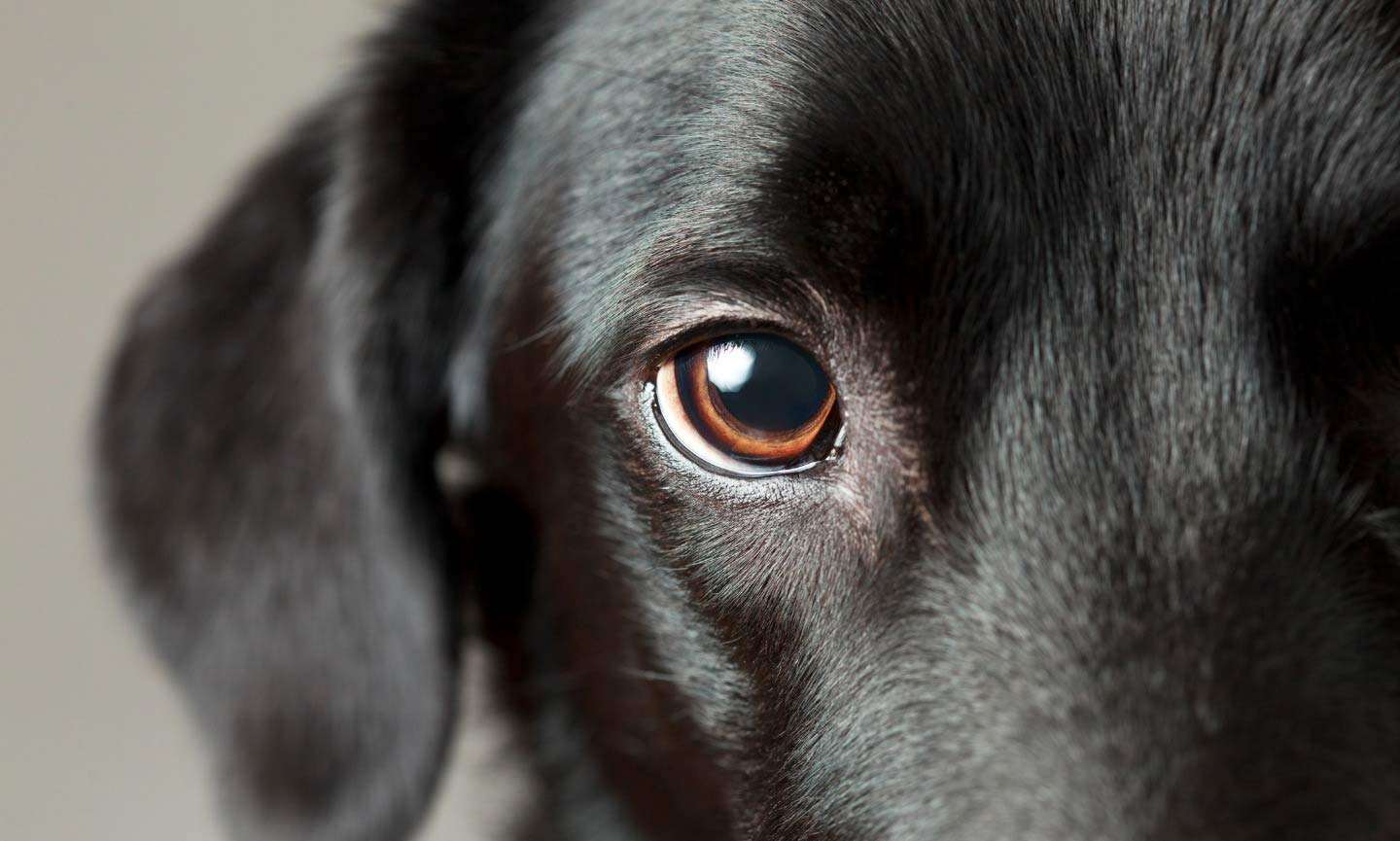
How Your Dog's Eyes Are Different From Yours
Dog eyes are very similar to human eyes in terms of structure, how they interpret light, and how vision works.
Similar to humans, dogs have a cornea, which is the front part of the eye responsible for bending reflected light.They also have an iris and pupil, which regulate how much light enters the eye. The eyes of a dog also contain both rods and cones (like humans), but the main difference in their vision versus ours is that dogs have more rods than cones, and humans have more cones than rods.
Human eyes have three cones, enabling us to see the colors red, green and blue, which is known as trichromatic vision. In comparison, dogs have only two cones, resulting in dichromatic vision. This is often labeled as “color blind” for dogs, although a dog’s color perception is more complex than that.
Additionally, dogs have lower visual acuity than humans do, meaning they have a lesser ability to discern details. Generally, humans with perfect eyesight have 20/20 vision, while dogs are believed to have 20/75 vision. Better visual acuity allows humans to distinguish objects at a distance of 20 feet, whereas dogs need to be approximately 20 feet away from an object to see it as clearly as a human standing 75 feet away.
Trichromatic vision (3 cones)
Dichromatic vision (2 cones)
Better able to detect details/colors (vision acuity)
Better able to detect movement
Can see longer distances, 20/20 vision
Recognizes better in shorter distance, 20/75 vision
Eye position on head makes for narrower field of vision, only 190 degrees peripheral vision
Eye position further apart makes for wider field of vision, up to 250 degrees peripheral vision
Needs more light to see
Needs less light to see
Better depth perception at 140 degrees binocular overlap
Worse depth perception at 30–60 degree binocular overlap
Smaller pupils
Larger pupils
Most of these key differences can be explained by evolution. Dogs, who are crepuscular, which refers to an animal most active during twilight, evolved to hunt their prey at dawn and dusk, both of which are typically low-light situations, because that is when prey is also most active.
“This may be evident to you when a dog sees a cat or rabbit in the dark and takes off after it when you barely even noticed it,” Fischer says.
Most notably, dogs (and other crepuscular animals) have a reflective layer in their eyes that humans do not. This is the tapetum lucidum noted earlier, and it’s one of the key reasons dogs can see well with a smaller amount of light, such as at night.
These differences mean a dog can see better at night than humans can. However, even with all these features working in their favor, dogs still can’t see in total darkness.
Why Do My Dog’s Eyes Glow at Night?
Often referred to as “eyeshine,” you may have noticed the phenomenon where the canine eye glows in photos or in the dark. Cats’ eyes do it, too, because both of these animals have the tapetum lucidum. Also called the choroid, this vascular layer of the eye acts like a mirror, causing the eyes to shine yellow or green in the dark. (You may have also noticed it in photos.)
What’s really happening during eyeshine is that the eye is setting off a signal to activate its rod receptors so that the eye can see better in the dark. It’s kind of like an “on” switch.
“Its function is to amplify light within the eye to help stimulate as many rod photoreceptors as possible, resulting in enhanced vision in low light,” adds Fischer.
Does My Dog's Breed Affect Their Vision?
While humans can have varying levels of eyesight, dogs’ visual abilities are more consistent across the board. However, some breeds might have superior vision compared to others.
“There are minor differences among dog breeds in their visual acuity, visual field, nighttime vision and motion detection,” says Fischer. “Most of the time it depends on the size and shape of their eyes, but some dogs have higher rod or cone cell density or an enhanced tapetum lucidum that improves their overall vision capabilities.”
Labrador Retrievers are one such breed with traditionally better visual acuity. Given that this breed is often used as seeing-eye dogs, it makes sense that Labradors are believed to have vision that’s closer to a human’s 20/20 vision.
There are also some dogs who don’t have the reflective structure built into their eyes. One study of Swedish dogs found that about 1.9 percent of dogs have no tapetum.
“Some dogs do not have a tapetum at all and in some breeds, especially small breed dogs, the tapetum is small and underdeveloped,” says Cuevas.
These dogs will still give off eyeshine, but instead of the light reflecting off the tapetum, it reflects off the blood vessels at the back of a dog’s eyes. As such, the color of their eyeshine might appear to be redder or more orange instead of the yellow or green eyeshine we see most frequently.
Don't feel bad for pups without a fully developed tapetum, though. While their dim light vision isn't as enhanced, they still have increased rod density in their eyes, so their night vision is still likely better than yours.
Can Dogs See Better Than Cats at Night?
A dog’s eyesight is very similar to a cat’s eyesight, even at night, so when determining which pet has the better night vision, we’re really splitting hairs. And yet, it’s felines who reign supreme, according to Fischer.
“Cats can see better than dogs at night [because] their eyes are bigger in proportion to their skull size. Their pupils allow more light through, and the cat’s tapetum lucidum has a superior efficiency to reflect light.”
The way a dog’s iris contracts is also different from how a cat’s iris contracts. The iris of a dog is rounder when contracted, which means less light can get through. Cats are able to narrow their pupils into slits, which allows more light to come through than if they were round.

Nighttime Walking Safety
While your dog may be able to see well in the dark, it’s also important that you make sure you’re seen in the dark—by other humans, that is. Make safety a priority during nighttime walks by dressing in bright colors (rather than black) and staying alert.
You can use the help of reflective dog collars, leashes and harnesses to make sure you and your dog are visible to oncoming cars and other pedestrians.
While most dogs will have no problem seeing in low light, Dr. Fischer adds that some dogs, especially those dealing with vision issues such as hereditary retinal dystrophy, may have more difficulty seeing at night than others.
“There are some medical conditions that affect a dog’s ability to see in low light,” says Dr. Fischer. “In those instances, nightlights and flood lights to illuminate the yard might be helpful.”
More Fascinating Dog Facts
Share:


